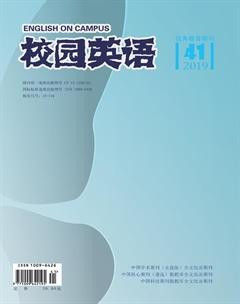Improving the English Writing Ability of Engineering Students By Using Genre-based Approach

In recent years, as the EFL education in China is concerned, writing in English has been regarded as one of the most difficult areas for both Chinese learners, especially for those non-English majors who have considerably less time and energy devoted to the English study (Xiong, 2019). With respect to the unique educational context of China, it seems that the Genre-based Approach (GBA) is a suitable teaching approach for teaching writing to most Chinese learners.
In one of the definitions of the GBA, it refers to teaching students how to use language patterns to accomplish coherent and purposeful prose (Hyland, 2003a). That is, the GBA helps students understand how the target texts are organized and why they are written in the ways they are.
Many researchers have attempted to determine the effectiveness of the GBA in various contexts. For example, Bhatia (1993a) analyzed job applications composed by South Asians. Flowerdew and Wan (2006) explored the specific discourse community of tax accountants in Hong Kong.
The present study was conducted to improve the writing ability of engineering students at Guanxi Technical College using Genre-based Approach combined with Feezs (2000) teaching and learning cycle which was consisted of five stages, namely building the context, modeling and deconstruction, joint construction of the text, independent construction of the text, and linking related text.
The moves analysis of the request e-mails was done based on Swales(1990) and Bhatias(1993) genre analysis concepts. It was found out that there were six moves, namely, move 1 (opening situation), move 2 (establishing correspondence chain), move 3 (introducing purposes), move 4 (attaching document), move 5 (closing corresponding chain), and move 6 (closing salutation).
There were 45 undergraduate engineering students participated in this study. The teaching content was to teach students to write request e-mails in the engineering context. Before the class, students were assigned to take a pre-test about writing request e-mails.
In the first stage, the language forms showing the request function of the sample were pointed out. Then the concepts of “move” and “step” were introduced and explained. Students would analyze a sample request e-mail using genre analysis results together with the teacher after the teacher had shown them how to do the analysis. Language forms and grammar points in each move in those e-mails samples were pointed out and explained. Students did more exercises to ensure familiarity with six moves of request e-mails. After that, students were assigned to write request e-mail in groups. At the end of this session, each group exchanged their work for editing. Students would write request emails individually as their homework. The feedback was given back during the next teaching session. At the end of this session, the students compared the characteristics of moves between request e-mails and the wedding invitation card as the last stage of teaching.
After the lesson implementation, students were assigned to take the post-test. The comparison between the pre-test and post-test score was undertaken by using the dependent t-test. The results of the comparison between the mean score of pre-test and post-test are presented in Table 1 below.
Table 1 shows that the mean score of the post-test score was higher than that of the pre-test score. It was also found from the t-test results that the writing achievement scores in the post-test were significantly higher than those obtained in the pre-test (p<0.05). Therefore, it can be concluded that the lessons implemented by using the GBA was effective to improve the English writing ability of engineering students.
References:
[1]Bhatia, V (1993a) Description to explanation in English for professional communication application of genre analysis. In Boswoor, T.(ed).
[2]Feez,S. (2002). Text-based syllabus design. Sydney: Mcquarie University/AMES.
[3]Flowerdew,J and Wan, A. (2006). Genre analysis of tax computation letters: How and why tax account write the way they do. English for Specific Purposes 25:133-153.
[4] Hyland, K. (2003a). Second language writing. USA: Cambridge University Press.
【作者簡介】龚艳(1987.9-),女,壮族,安徽合肥人,泰国易三仓大学,博士在读,研究方向:英语教育。

